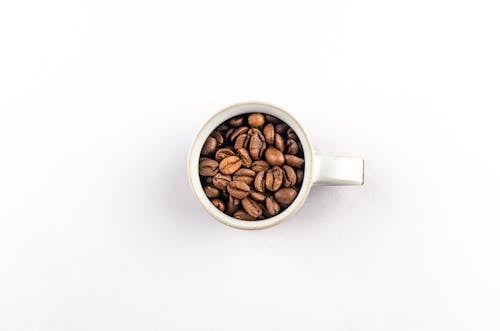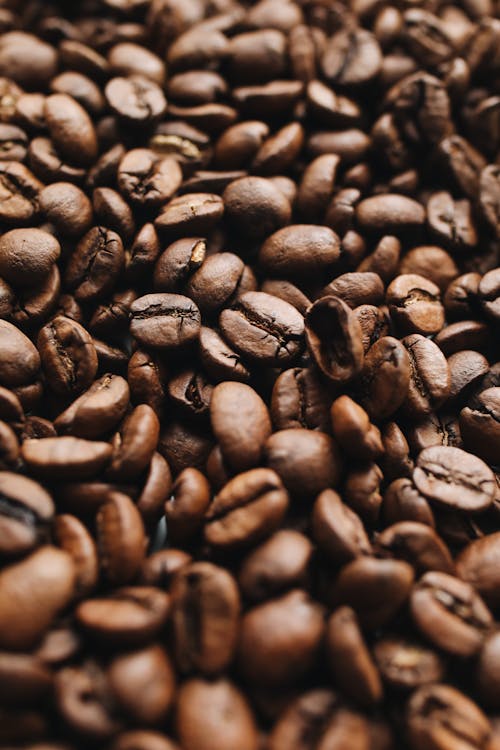If you love coffee, you know how important it is to grind your beans fresh before brewing. But what if you don’t have a coffee grinder at home? Do you have to settle for pre-ground coffee or spend money on a new appliance?
Not at all! You can use your Vitamix blender to grind coffee beans and enjoy a delicious cup of joe anytime. In this article, I will show you how to do it, what are the benefits, and what are the potential drawbacks of using your Vitamix as a coffee grinder.
You can use your Vitamix blender to grind coffee beans by following these steps:
- Measure the amount of coffee beans you need for your brew and place them in the Vitamix container.
- Secure the lid and select the variable speed setting.
- Start at the lowest speed and gradually increase to the highest speed in about 10 seconds.
- Blend for about 10 to 15 seconds or until the beans are ground to your desired consistency.
- Transfer the ground coffee to a filter or a storage container and enjoy your fresh brew.

Why Use Your Vitamix as a Coffee Grinder?
There are several reasons why you might want to use your Vitamix blender to grind coffee beans, such as:
- You can save money and space. If you already have a Vitamix blender, you don’t need to buy a separate coffee grinder or find room for it in your kitchen. You can use one appliance for multiple purposes and save some cash and counter space.
- You can control the grind size. By adjusting the speed and blending time, you can grind your coffee beans to different sizes, from coarse to fine. This allows you to customize your brew according to your preference and brewing method.
- You can enjoy fresher and more flavorful coffee. Grinding your own coffee beans right before brewing ensures that you get the most aroma and flavor from your coffee. Pre-ground coffee tends to lose its freshness and quality over time due to exposure to air and moisture.
What Are the Drawbacks of Using Your Vitamix as a Coffee Grinder?
While using your Vitamix blender to grind coffee beans has its advantages, it also has some drawbacks that you should be aware of, such as:
- You might damage your blender or void your warranty. Grinding hard substances like coffee beans can wear out your blender blades and motor over time. This might affect the performance and lifespan of your Vitamix blender or even cause it to break down. Moreover, some Vitamix models explicitly state that grinding coffee beans is not recommended and doing so might void your warranty. So make sure you check your manual before using your Vitamix as a coffee grinder.
- You might alter the taste of your coffee or other foods. Grinding coffee beans in your Vitamix blender can leave behind some residue and odor that might affect the taste of your coffee or other foods that you blend later. To prevent this, you should clean your blender thoroughly after each use and use a separate container for grinding coffee if possible.
- You might not get the best results. While using your Vitamix blender to grind coffee beans is convenient and easy, it might not produce the same quality and consistency as a dedicated coffee grinder. A Vitamix blender is designed to blend, not grind, so it might not be able to achieve a uniform grind size or handle very fine grinds well. This might affect the extraction and flavor of your coffee.
FAQs

Q: How do I clean my Vitamix after grinding coffee?
A: To clean your Vitamix after grinding coffee, follow these steps:
- Rinse the container with warm water and discard any leftover grounds.
- Fill the container halfway with warm water and add a drop of dish soap.
- Secure the lid and select the cleaning cycle or blend on high speed for about 30 seconds.
- Rinse the container again with warm water and let it air dry.
Q: Can I use my Vitamix dry container to grind coffee?
A: Yes, you can use your Vitamix dry container to grind coffee. The dry container is designed to handle dry ingredients better than the wet container, so it might produce a more consistent and finer grind. However, keep in mind that using the dry container for grinding coffee might still damage your blender or void your warranty.
Q: What is the best grind size for different brewing methods?
A: The best grind size for different brewing methods depends on how long the water and the coffee are in contact. Generally, the longer the contact time, the coarser the grind, and vice versa. Here are some examples of grind sizes for common brewing methods:
- French press: Coarse grind, similar to sea salt. The contact time is about 4 minutes.
- Pour over: Medium-fine grind, similar to table salt. The contact time is about 2 to 3 minutes.
- Drip coffee: Medium grind, similar to sand. The contact time is about 5 minutes.
- Espresso: Fine grind, similar to powder. The contact time is about 20 to 30 seconds.
Q: How long can I store ground coffee?
A: Ground coffee loses its freshness and flavor quickly after grinding, so it is best to use it as soon as possible. However, if you need to store it for later use, you should follow these tips:
- Store it in an airtight container or a resealable bag.
- Keep it away from heat, light, moisture, and strong odors.
- Store it in a cool and dark place, such as a pantry or a cabinet.
- Use it within a week or two for optimal quality.
Q: Can I use my Vitamix to make cold brew coffee?
A: Yes, you can use your Vitamix to make cold brew coffee. Cold brew coffee is made by steeping coarsely ground coffee in cold water for 12 to 24 hours. You can use your Vitamix to grind the coffee beans and then transfer them to a large jar or pitcher. Add cold water and stir well. Cover the jar or pitcher and refrigerate it for 12 to 24 hours. Strain the coffee through a cheesecloth or a paper filter and enjoy your cold brew.
Why Trust Me?
You might be wondering why you should trust me when it comes to grinding coffee with your Vitamix blender. Well, let me tell you a bit about myself.
I’m Dale, the founder of www.presstocook.com and a food safety expert with over 10 years of experience in the restaurant industry managing busy Asian restaurants in central London where I ensured the highest standards of food safety and hygiene.
I have been trained on the highest food safety standards and have a long track record of delivering the highest food safety in establishments I have been running, working with local authorities and external auditors, passing them all – All while ensuring the smooth operation of a very busy restaurant and driving the highest standard.
I am certified in: HACCP (Hazard Analysis and Critical Control Points – Level 2), Food Safety (Level 3), Health and Safety and Restaurant Management All CPD certified and Endorsed by the institute of hospitality. I retrain every year to keep up to date with the latest updates in food safety standards and every changing legislation. I have years of experience working with local authorities and external food safety auditors to ensure food safety standards are up to the highest standards, including meticulous paperwork and record keeping.
But I’m not just a food safety expert. I’m also a passionate home cook and a coffee lover. I have been using my Vitamix blender for years to make smoothies, soups, sauces, nut butters, and yes, even coffee. I love experimenting with different recipes and techniques and sharing them with my readers on my blog.
I have tried grinding coffee beans with my Vitamix blender many times and I can tell you that it works well if you follow some simple tips and tricks. I have also compared the results with using a regular coffee grinder and I can honestly say that there is not much difference in taste or quality.
So trust me when I say that you can use your Vitamix blender to grind coffee beans and enjoy a fresh and flavorful cup of joe anytime.
Conclusion
Grinding coffee beans with your Vitamix blender is possible and easy. You just need to measure the beans, blend them at high speed for a few seconds, and transfer them to a filter or a storage container.
Using your Vitamix blender as a coffee grinder has some benefits, such as saving money and space, controlling the grind size, and enjoying fresher and more flavorful coffee.
However, it also has some drawbacks, such as damaging your blender or voiding your warranty, altering the taste of your coffee or other foods, and not getting the best results.



